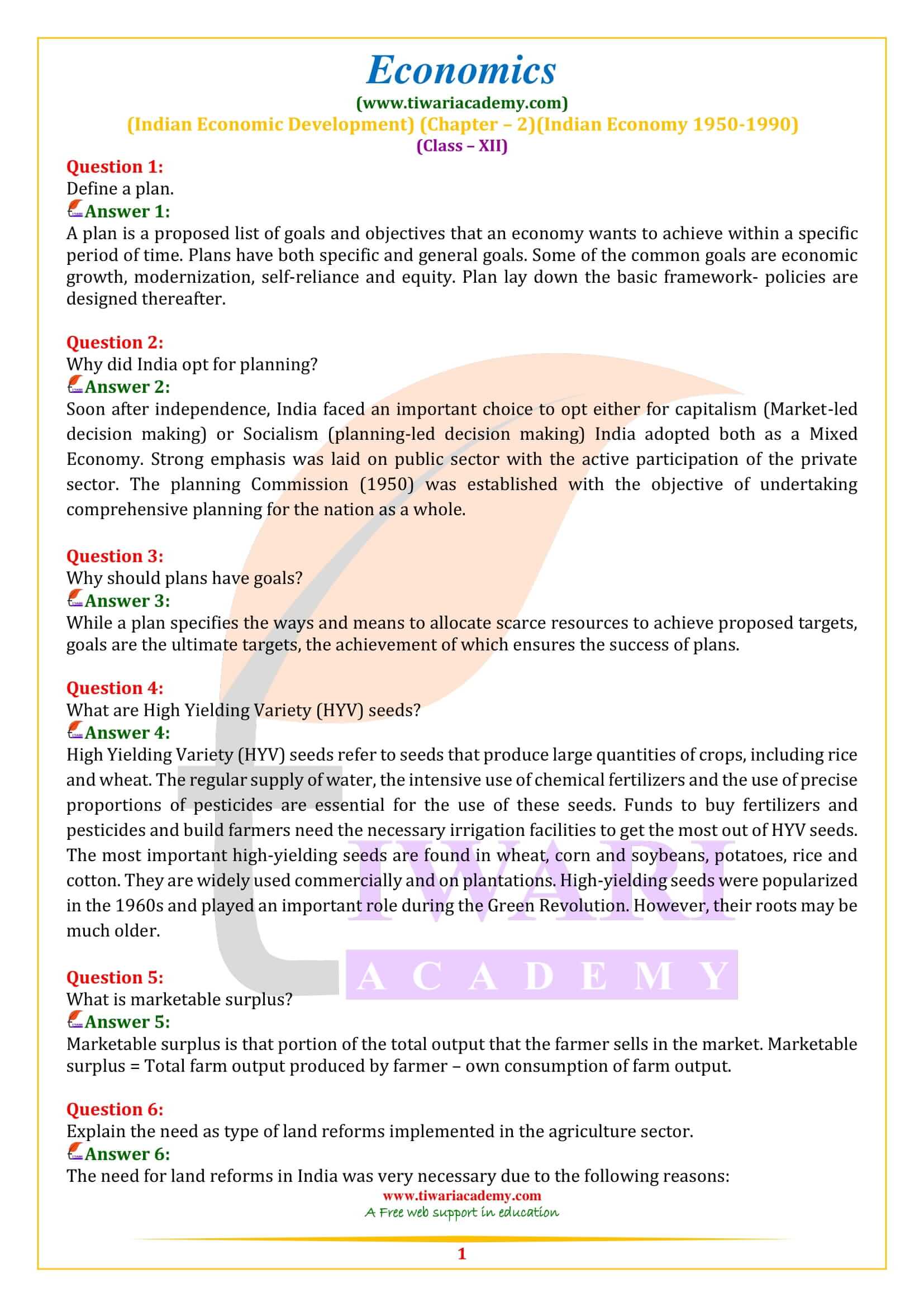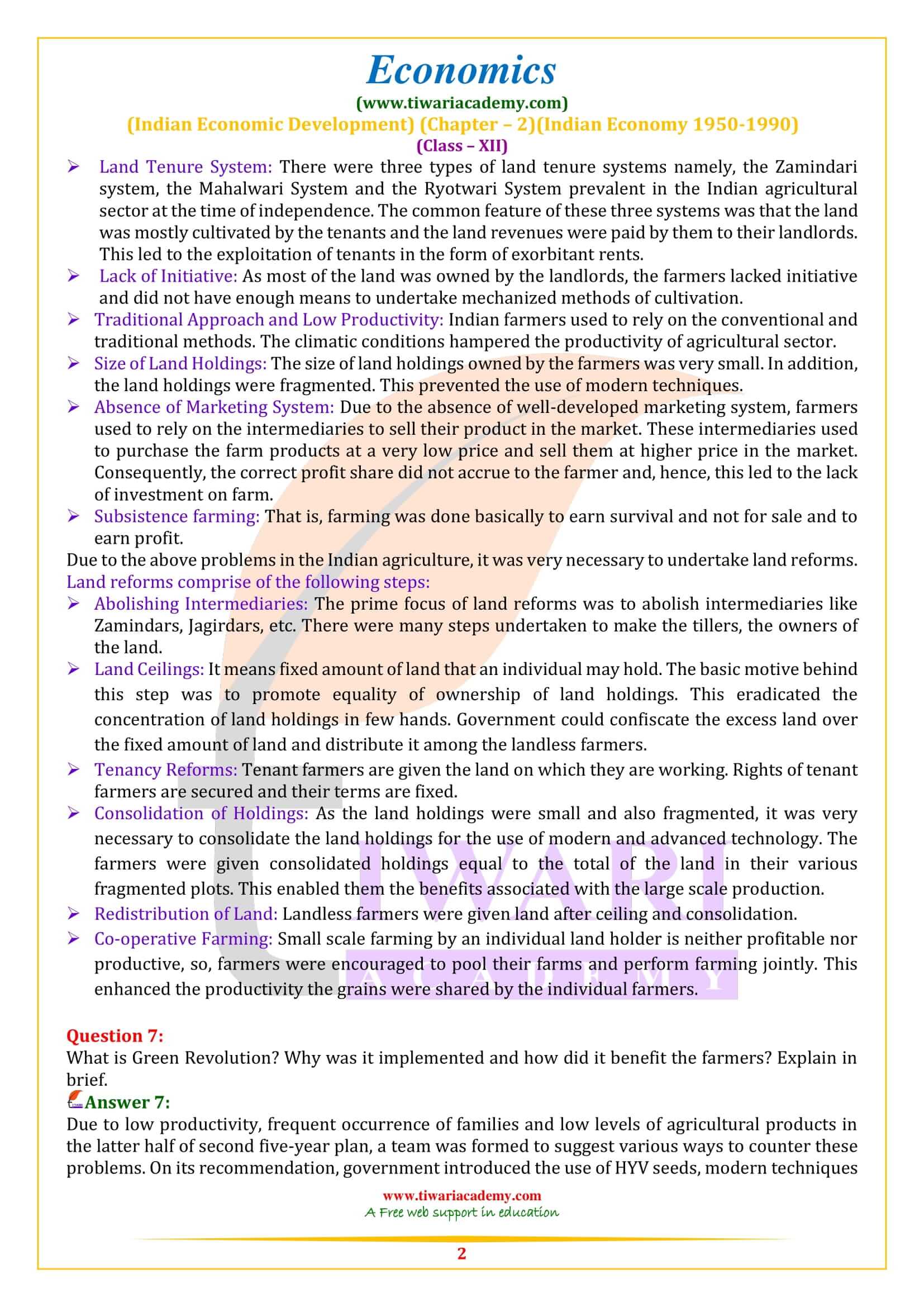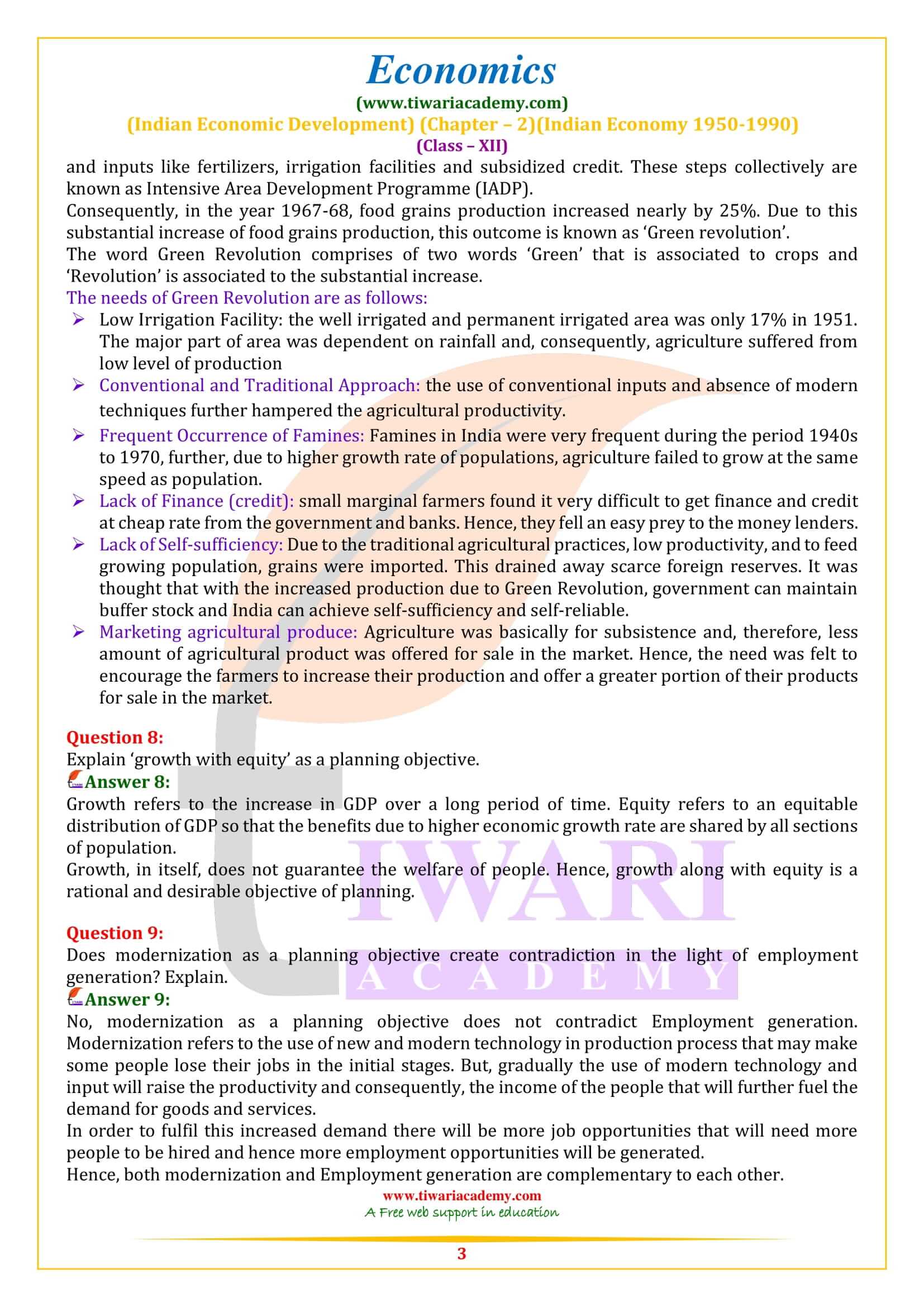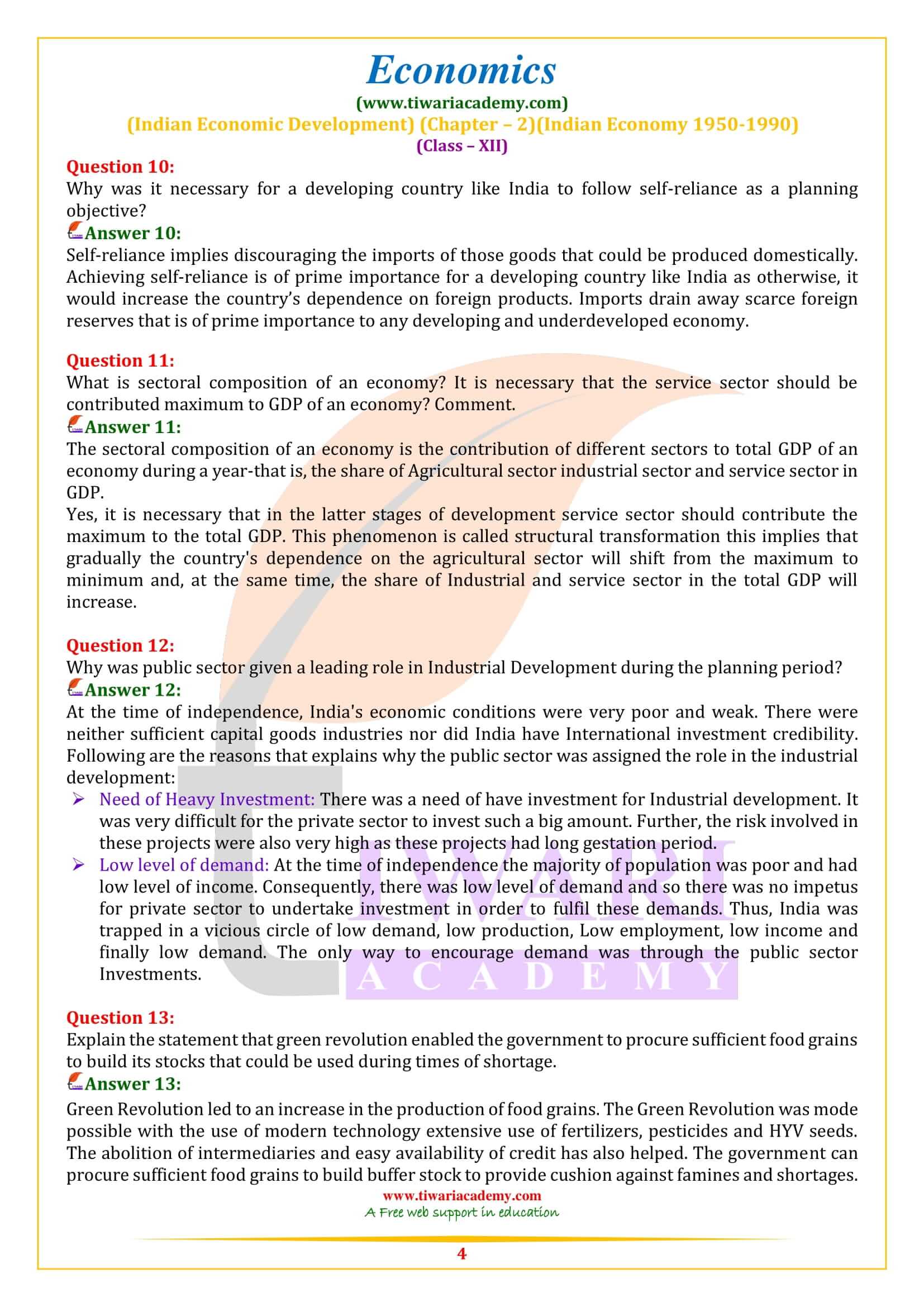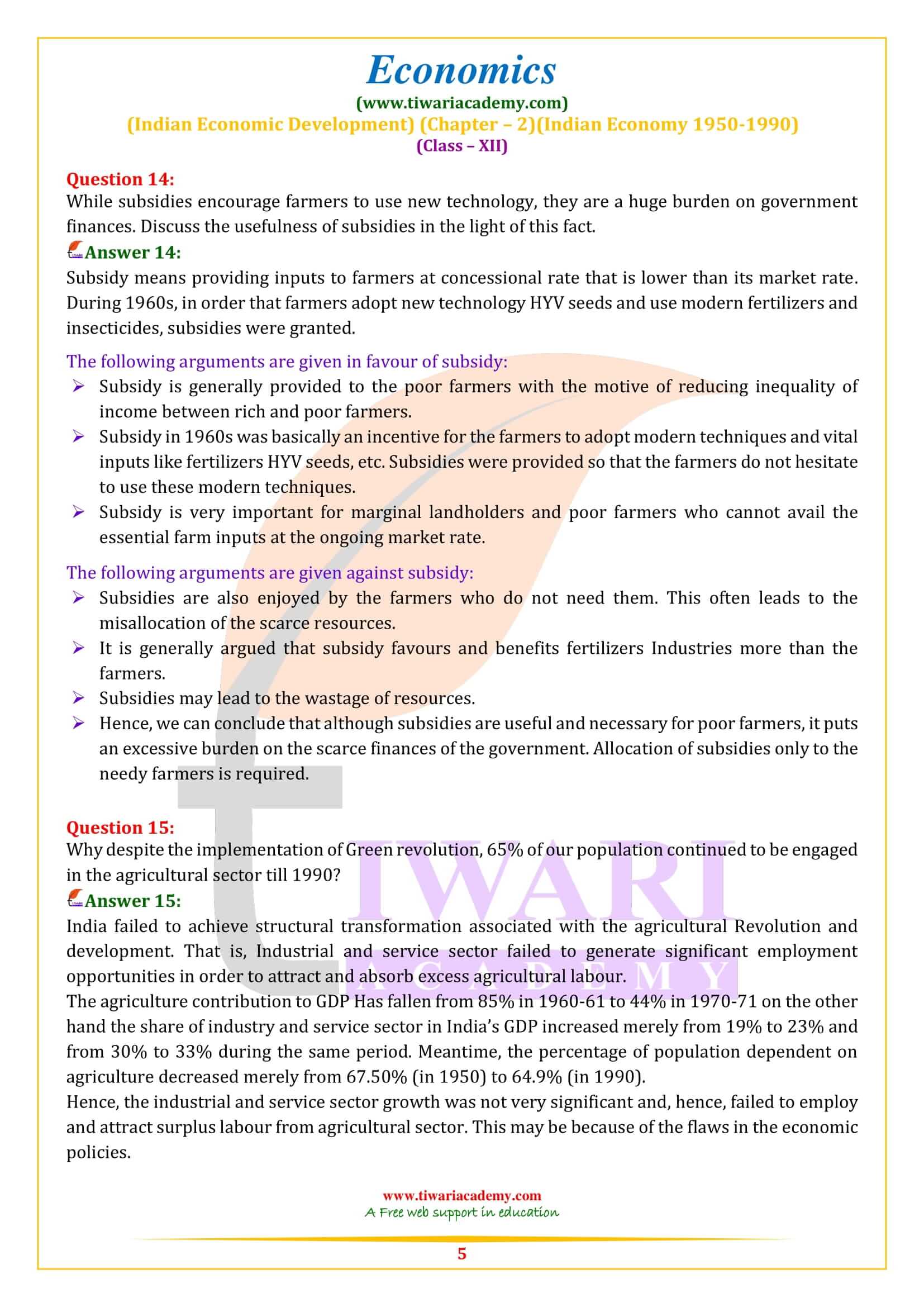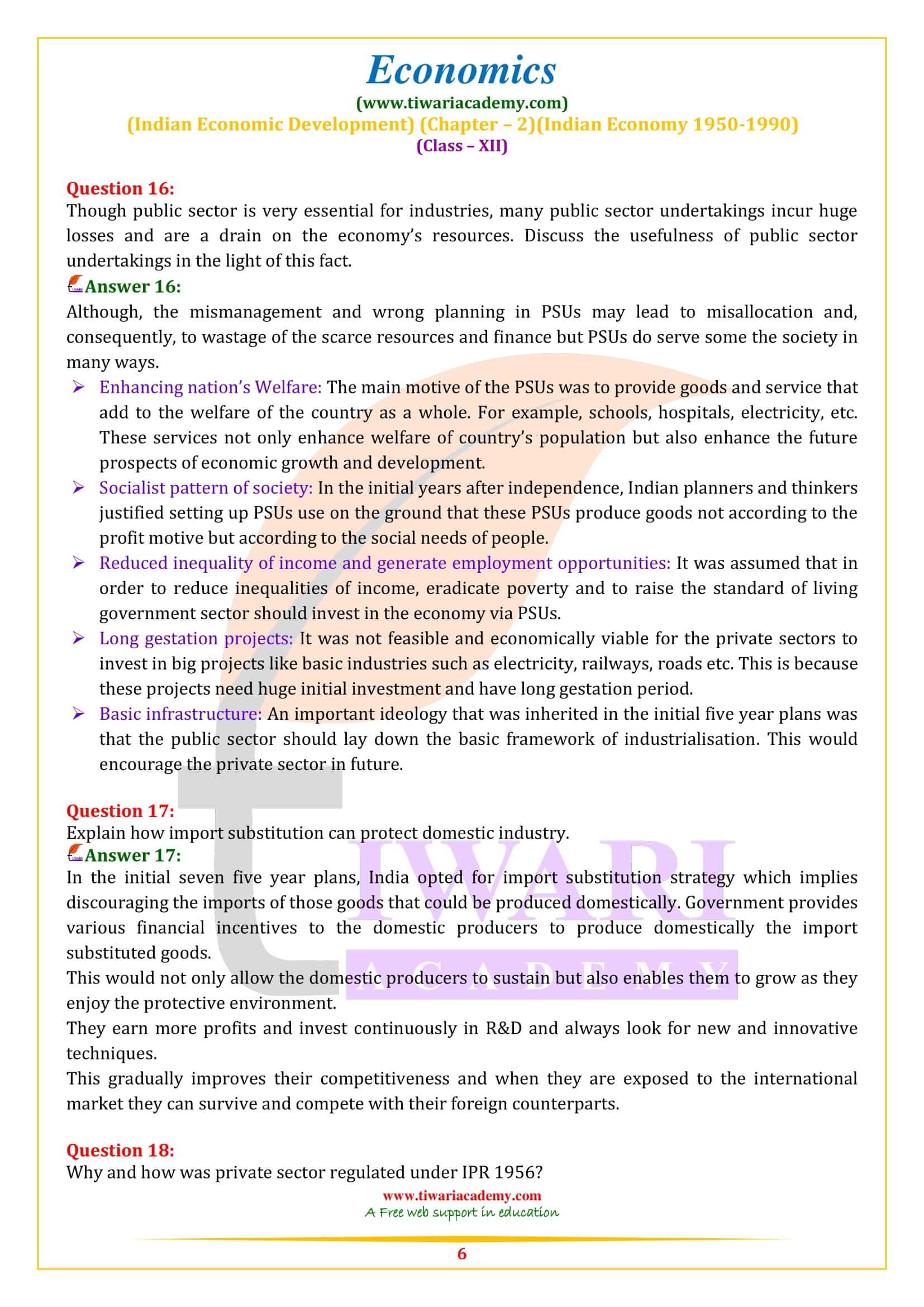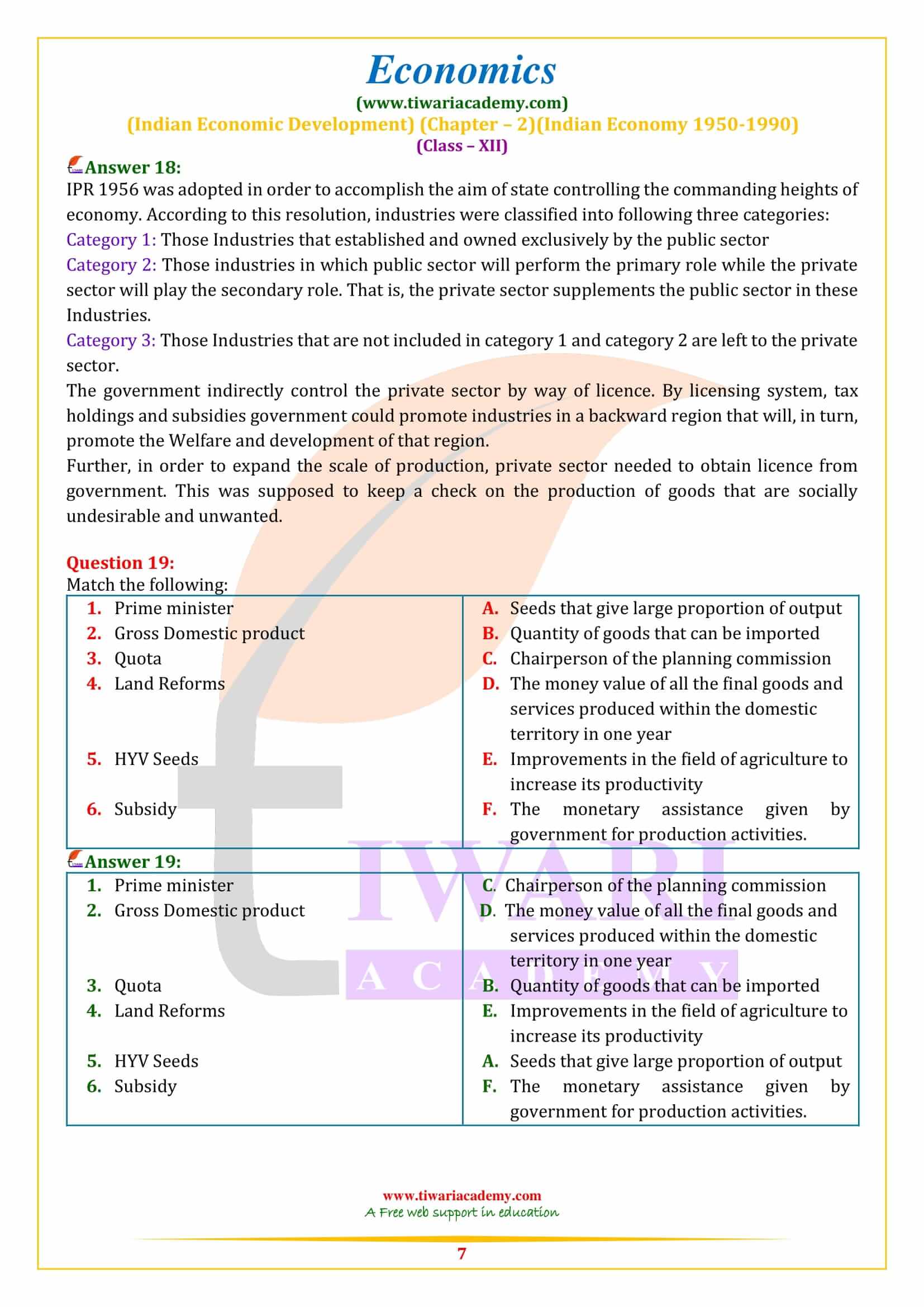NCERT Solutions for Class 12 Indian Economic Development Chapter 2 Indian Economy 1950-1990 in Hindi and English Medium updated for new academic session 2024-25. Students of CBSE and State board can get the important question answers and MCQ of 12th Economics chapter 2 with explanation.
Class 12 Indian Economic Development Chapter 2 Question Answers
Class 12 Economics – Types of Economic Systems
Every society need to answer 3 queries: 1) What merchandise and services ought to be created within the country? 2) How should the products and services be produced? Should producers use additional labour or additional capital (machines) for manufacturing things? 3) How should the products and services be distributed among people? One answer to those questions is to rely upon economic process of offer and demand. In a market economy, additionally referred to as capitalism, solely those trade goods are created that are in demand, i.e., merchandise which will be sold-out fruitfully either within the domestic or within the foreign markets.
The Premise of Buying Power
In a capitalist society the merchandise created are distributed among individuals not on the premise of what individuals would like however on the premise of Buying Power. That is, one need to have the money in the pocket to shop for it. Affordable housing for the poor is way required however won’t count as demand within the market sense as a result of the poor don’t have the buying power to back the demand. As a result, this artifact won’t be created and provided as per economic process. In a socialist society the govt decides what merchandise are to be created in accordance with the wants of the society.
A Mixed Economy
It’s assumed that the govt is aware of what’s sensible for the individuals of the country then the wishes of individual shoppers don’t seem to be given abundant importance. The govt decides however merchandise are to be created and the way they ought to be distributed. In theory, distribution underneath socialism is meant to be supported what individuals would like and not on what they’ll afford to get. In contrast to underneath capitalism, as an example, a socialist nation provides free health care to all its citizens. Strictly, a socialist society has no material possession since everything is owned by the state. In a mixed economy, the market will provide whatever goods and services it can produce well, and the government can offer essential merchandise and services that the market fails to try and do.
12th Economics – The Goals of Five-Year plans
A plan ought to have some clearly nominative goals. The goals of the five-year plans were: growth, modernization, independency and equity. This doesn’t mean that each of the plans have given equal importance to any or all these goals. Because of restricted resources, an alternative has got to be created in every arrangement concerning that of the goals is to be primary importance. Yet, the planners got to make sure that, as way as attainable, the policies of the plans don’t contradict these four goals. Allow us to currently study the goals of designing in some detail.
Growth in Five-Year plans
It refers to extend within the country’s capability to supply the output of products and services inside the country. It implies either a bigger stock of productive capital, or a larger size of supporting services like transport and banking, or a rise within the potency of productive capital and services. The GDP of a rustic comes from the various sectors of the economy, specifically the agricultural sector, the commercial sector and therefore the service sector. The contribution created by each of these sectors makes up the structural composition of the economy.
Modernisation in Five-Year plans
To extend the assembly of products and services the producers got to adopt new technology. As an example, a farmer will increase the output on the farm by victimisation of new seed varieties rather than victimisation of the current one. Similarly, a plant will increase output by employing a new kind of machine. Adoption of recent technology is named as modernisation.
Self-reliance
A nation will promote economic process and modernization by victimisation of its own resources or by victimisation of foreign resources from alternate nations. The primary seven five-year plans gave importance to independency which suggest avoiding imports of these merchandise that may well be created in India itself. This policy was thought-about a necessity so as to cut back our dependence on foreign countries, particularly for food. It is understandable that people who were recently freed from foreign domination should give importance to independency.
Equity
Currently growth, modernisation and self-reliance, by themselves, might not improve the sort of life which individuals live. A country can have high growth, the most modern technology developed in the country itself, and also have most of its people living in poverty. It is important to ensure that the benefits of economic prosperity reach the poor sections as well instead of being enjoyed only by the rich. So, in addition to growth, modernisation and self-reliance, equity is also important.
Agriculture in Five Year Plans
During the colonial rule there was neither growth nor equity within the agricultural sector. The policy makers of independent India had to deal with these problems that they did through land reforms and promoting the utilization of ‘High Yielding Variety’ seeds that ushered in a revolution in Indian agriculture.
Land Reforms
At the time of independence, the tenure system was characterized by intermediaries who merely collected rent from the particular tillers of the soil while not causative towards enhancements on the farm. The low productivity of the agricultural sector forced India to import food from the United States of America (U.S.A.).
Equity in agriculture entailed land reforms that primarily see modification within the possession of landholdings. Simply a year after independence, steps were taken to get rid of intermediaries and to form the tillers the owners of land. The thought behind this move was that possession of land would provide incentives to the tillers to speculate in creating enhancements provided decent capital was created accessible to them.
Land Ceiling
Land ceiling was another policy to promote equity within the agricultural sector. This suggests fixing the most size of land that might be owned by an individual. The aim of land ceiling was to cut back the concentration of land possession in a few hands. The abolishment of intermediaries meant that some 200 lakh tenants came into direct contact with the govt -they were thus freed from being exploited by the zamindars. The possession given on tenants gave them the incentive to increase output and this contributed to growth in agriculture.
However, the goal of equity wasn’t totally served by abolishment of intermediaries. In some areas the previous zamindars continued to own giant areas of land by creating loopholes in the legislation; there have been cases wherever tenants were evicted and therefore the land owners claimed to be self-cultivators, claiming possession of the land, the poorest of the agricultural labourers did not benefit from land reforms.
Why is it important to study economic systems while proceeding to study chapter 2 class 12th Indian economy development?
There are two main economic systems namely the capitalist system and socialist system. Indian planners lead by Prof. Mahanoy is borrowed the best features from both the systems and adopted the system of mixed economy where the public sector was given the task of developing the infrastructure and partially solving the unemployment problem.
Is it necessary to remember the planning term/duration of five year plans for class 12th chapter 2 Indian economics?
We suggest students to remember the term of first few five year plans and the last two or three plans. You must be aware that five year plans have been discontinued now.
How are Industrial policy resolutions 1 and 2 relevant to planning in chapter 2 class 12th Indian economic development?
The IPR 1 of 1948 and IPR 2 1946 lead a strong foundation for infrastructure development and the IPR 2 classified industries into three categories.
